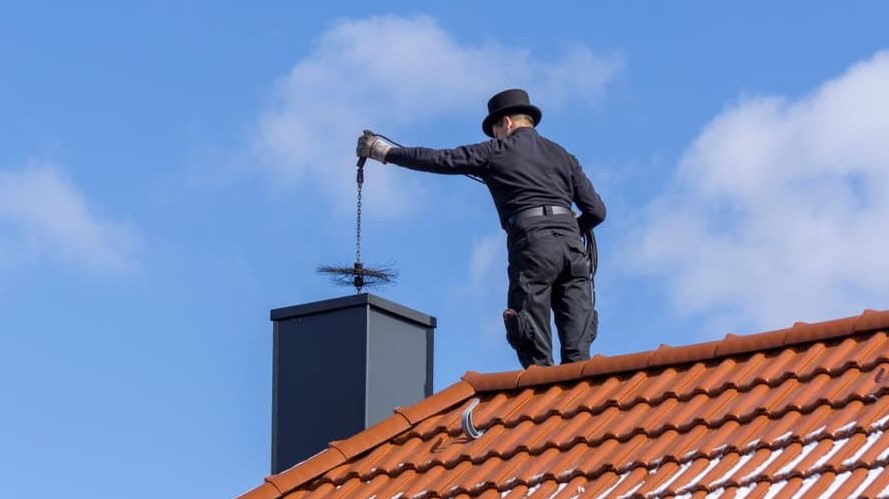In the coastal city of Santa Cruz, homes are often close to forested areas, making wildlife encounters more frequent. Chimney Animal Removal becomes essential as chimneys, unfortunately, make ideal homes for raccoons, squirrels, birds, and even bats looking for shelter.

Recognizing the signs early can help you avoid costly repairs, health risks, and fire hazards. Understanding the need for Chimney Animal Removal is the first step in protecting your home and family.
Professional Chimney Animal Removal in Santa Cruz ensures your home stays safe from raccoons, birds, and other wildlife intrusions.
Why Animals Invade Chimneys in Santa Cruz
Santa Cruz’s mild climate and natural surroundings create the perfect conditions for wildlife to thrive. Animals like raccoons and birds are often drawn to chimneys because they offer warmth, protection from predators, and a quiet place to nest—especially during breeding seasons. However, their presence can lead to blocked flues, damaged masonry, unpleasant odors, and disease-carrying parasites.
That’s why timely and professional Chimney Animal Removal is vital.
Table: Common Signs That Indicate Animals in Your Chimney
| Sign | Possible Animal | Why It’s a Concern |
|---|---|---|
| Scratching or scampering sounds | Squirrels, raccoons, rats | Indicates active nesting or movement |
| Chirping or flapping noises | Birds, especially chimney swifts | Birds may be stuck or nesting |
| Strong foul odors | All animals | May indicate droppings or decomposing remains |
| Droppings near the fireplace | Raccoons, rats, squirrels | Health hazard; can spread parasites |
| Stains on the chimney exterior | All animals | Suggests urine leaks or nesting materials |
| Debris falling into the fireplace | Birds, squirrels | Nesting materials blocking airflow |
| Flies or insects inside | Decomposing animal remains | Attracts pests and poses hygiene risks |
These indicators are the red flags homeowners in Santa Cruz should not ignore. At this stage, calling a professional for Chimney Animal Removal becomes essential.
The Dangers of Ignoring the Signs
Ignoring the warning signs can lead to several problems:
- Health Risks: Animal droppings can contain histoplasmosis, leptospirosis, or roundworms.
- Structural Damage: Chewed flue liners, scratched bricks, and torn chimney caps are common.
- Fire Hazards: Nesting materials are highly flammable and can ignite during fireplace use.
- Smoke Backup: Blocked chimneys can redirect dangerous smoke and carbon monoxide into your home.
Hiring an expert for Chimney Animal Removal in Santa Cruz ensures humane and safe eviction methods, followed by professional cleaning and preventive sealing.
What to Do If You Suspect Animals in Your Chimney
If you suspect animal activity in your chimney, avoid starting a fire or trying to remove them yourself. Instead:
- Observe and record the signs – note sounds, odors, and visible damage.
- Call a certified chimney professional – look for licensed experts with wildlife removal experience.
- Schedule an inspection – a detailed inspection confirms the type and extent of the infestation.
- Get a removal and prevention plan – proper Chimney Animal Removal also includes future-proofing.
Price Table: Average Cost of Chimney Animal Removal in Santa Cruz
| Service Type | Estimated Cost (Santa Cruz) |
|---|---|
| Basic animal removal (1 visit) | $200 – $400 |
| Emergency removal | $300 – $600 |
| Nest and debris cleanup | $100 – $250 |
| Chimney cap installation | $150 – $350 |
| Full inspection & sealing package | $300 – $700 |
Avoid fire hazards and health risks with expert Chimney Animal Removal in Santa Cruz using humane and effective wildlife control methods.
FAQs
Q1: What animals most commonly invade chimneys in Santa Cruz?
A: Raccoons, squirrels, chimney swifts, and bats are the most frequent invaders in this region.
Q2: Can I remove the animal myself?
A: DIY removal is risky and often illegal, especially with protected species. Always contact a professional for humane Chimney Animal Removal.
Q3: How soon should I act if I hear noises in my chimney?
A: Immediately. Delays can result in nesting, increased damage, and the risk of death inside the flue, which complicates removal.
Q4: Are chimney caps enough to prevent re-entry?
A: Yes, when properly installed. Caps are a critical part of animal prevention after Chimney Animal Removal.
Q5: Will removing animals damage my chimney?
A: Not when done by certified professionals. In fact, they’ll help restore and protect your chimney during the process.
Q6: How often should my chimney be inspected?
A: At least once a year. Inspections can catch early signs of animal intrusion before damage occurs.
Q7: Is there a humane way to handle removal?
A: Yes. Ethical companies in Santa Cruz use one-way exits and relocation methods that do not harm the animals.
Q8: Can trapped animals die in the chimney?
A: Unfortunately, yes. This creates serious odor, hygiene, and pest issues—prompt Chimney Animal Removal helps avoid this.
Q9: Are there legal restrictions on wildlife removal?
A: Some species are protected by law. Only licensed wildlife handlers should perform removals in compliance with local regulations.
Q10: What should I do after the removal?
A: Disinfect the chimney, inspect for damage, install caps, and schedule regular inspections to ensure continued safety.
Conclusion
Your chimney should be a functional part of your home, not a wildlife shelter. If you’ve noticed noises, odors, droppings, or visible damage, these are all signs you need Chimney Animal Removal in Santa Cruz. Prompt action not only protects your property but ensures humane treatment of the animals involved.
Professional chimney services will assess, remove, clean, and secure your chimney against future intrusions—giving you peace of mind and a safer home environment.
Read More: Santa Cruz Chimney Sweep

